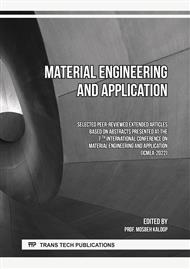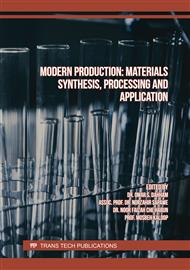p.193
p.203
p.211
p.219
p.229
p.237
p.243
p.251
p.257
Electrochemical Studies on Poly(Ethylene Oxide) Based Gel-Polymer Electrolytes for Magnesium-Ion Batteries
Abstract:
Research and development works in the field of multi-valent metal-ion batteries are intensified these days because of the abundance of multi-valent elements such as magnesium, aluminum, calcium and so on in the Earth’s crust. Magnesium-ion batteries are particularly important, because they have high theoretical volumetric capacity (3832 mAh cm-3) compared to that of well-known lithium-ion batteries (2062 mAh cm-3). However, there are potential challenges, typically, designing suitable electrolytes with sufficient ambient temperature ionic conductivities is a major challenge. In this work, a set of gel-polymer electrolytes based on poly (ethylene oxide) (PEO) host polymer and magnesium acetate (Mg(CH3COO)2) ionic salt have been synthesized and characterized by electrochemical impedance spectroscopy (EIS), DC polarization and linear sweep voltammetry (LSV) techniques. Among the compositions studied in this work, the optimized PEO-Mg(CH3COO)2-EC-PC electrolyte (6:14:40:40 wt.%) showed an ambient temperature ionic conductivity of 6.1x10-5 S cm-1. Ionic conductivity vs inverse temperature showed Arrhenius behavior with almost same activation energies (0.15 - 0.18 eV) for all the compositions. DC polarization studies performed with stainless steel blocking electrodes under an externally applied voltage of 1V showed that the highest conducting composition is dominantly an ionic conductor with an ionic transference number of 0.99. The electronic contribution to conductivity was found to be almost negligible, which is desirable to avoid short circuits within the cell. The LSV test on highest conducting composition revealed that the electrochemical stability window of these electrolytes is about 2.2 volts.
Info:
Periodical:
Pages:
229-234
Citation:
Online since:
December 2022
Price:
Сopyright:
© 2022 Trans Tech Publications Ltd. All Rights Reserved
Share:
Citation:



